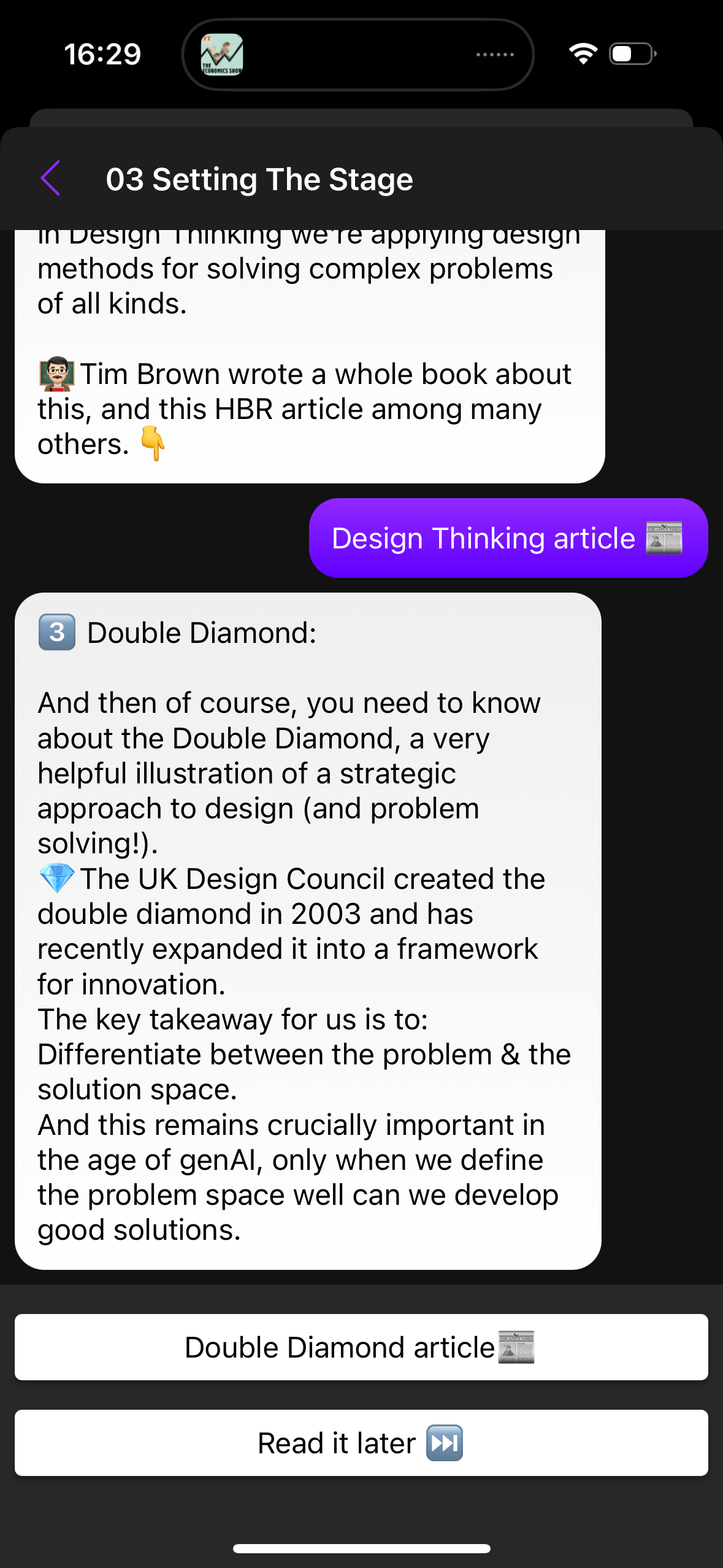design thinking
a way to aPPROACH problems in a user-centric way
Design thinking is a hands-on, user-centric approach to problem solving can lead to innovation, which in turn can lead to differentiation and a competitive advantage. This practical, human-centred approach is defined by the Design thinking process and consists of six phases -as illustrated to the right.
The core idea is that you first empathize with your customers or users, then define the problem clearly, and then ideate possible solutions. After that you prototype the most promising path and test that with users/customers prior to fully developing and launching it.






THE BENEFITS OF DESIGN THINKING
There are clear benefits to applying design thinking to business challenges - whether to figure out which new product to launch and find product/market fit, or if you seek to improve a process or build a learning program.
Some of these benefits are:
You start with empathy and user data and test your ideas with real people
You get various stakeholders involved and include different perspectives - which reduces bias and get’s you buy-in internally
You’re testing ideas early -which means you can do this at speed and relatively low cost
This means you’re de-risking and figuring out early if an idea has value
Plus, you’re infusing customer-centric thinking more widely across your organization - because this is a way of working that should certainly NOT be limited to the design department
design thinking vs design sprints
There is always a bit of confusion around what is design thinking versus a design sprint. And it’s relatively simple - a Design sprint is a specific time boxed way of applying going through the Design thinking process.
In a Design sprint you can achieve the work that is normally done within the space of 3-4 months, if conducted in standard meetings, emails and a lot of back and forth, within a single week.
Yes, that’s true - within 7 days (excluding preparation time) - but it is truly astonishing how much can be achieved by a team within such a short time span. Whether you’re exploring a new product idea or want to develop a company-wide learning program - the format works for pretty much any challenge. The key is in preparing well (ideally including a problem framing deep dive) and having a good facilitator. (Hi 😁)
design thinking learning journeys
Learning journey - App experience
To extend the momentum generated through workshops, deep dives or off-sites and embed customer-centricity in your organization -
let your teams continue growing through app-based micro-learning.
The first hybrid learning journey that’s ready to be brought to your teams is - DESIGN THINKING FOR CUSTOMER CENTRICITY & SUSTAINING INNOVATION
-
Meet your teams where they are, integrate learning into every day.
Instil customer-centricity into real work challenges
Practice & learn in small bites, across an extended timeframe of 3-months
Offer innovative hybrid learning and development that creates connections and AHA moments
Increase retention & scale learning across your org through different cohorts.
-
An ideal group size is between 10-15 participants per cohort, so as to build meaningful connections and engaging (on-site or remote) workshops to start and finish.
However, you can easily scale this and run several cohorts as needed.
-
Each learning journey lasts for 3 months and includes a kick-off and a wrap-up workshop.
-
The way learning & development should be. Weekly, small doses and inputs with access to the coach and learning cohort every other week through open office-hours. And throughout via the learning app.
LEARNING JOURNEYS
How learning journeys work
1| Kick-0ff -
on-site or online
All learning journeys start with the team connecting through an on-site or online workshop to create momentum and define the problem space together.
I am are currently offering this for in-house teams within the same company (but get in touch if you are looking for a different set-up).
2| Twice weekly
app-based impulses
Keeping the momentum and the learnings alive matters if you want to change the way you work.
Through an App each team member receives micro-learning units in various engaging formats to embed learning into everyone’s daily work.
Journeys are 3 months long, so the change in mindset really becomes a habit.
Through the app participants also have direct access to the coach, in case of issues or urgent questions.
3| check-ins every other week & coach access at all times
This is a space to ask questions, solve challenges and discuss how things are going when applied to real-world problems.
I offer open office hours for the whole group every other week to further deepen the topics.
Most of all though, these are meant to connect, discuss and learn from each other.






